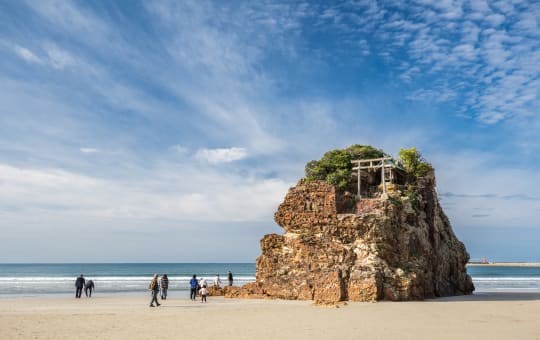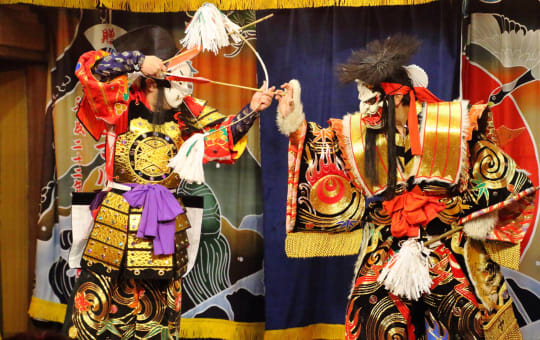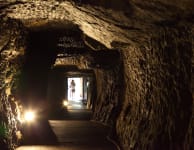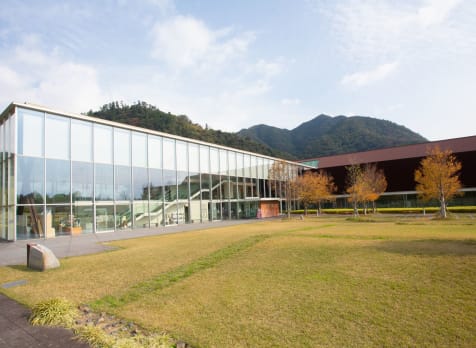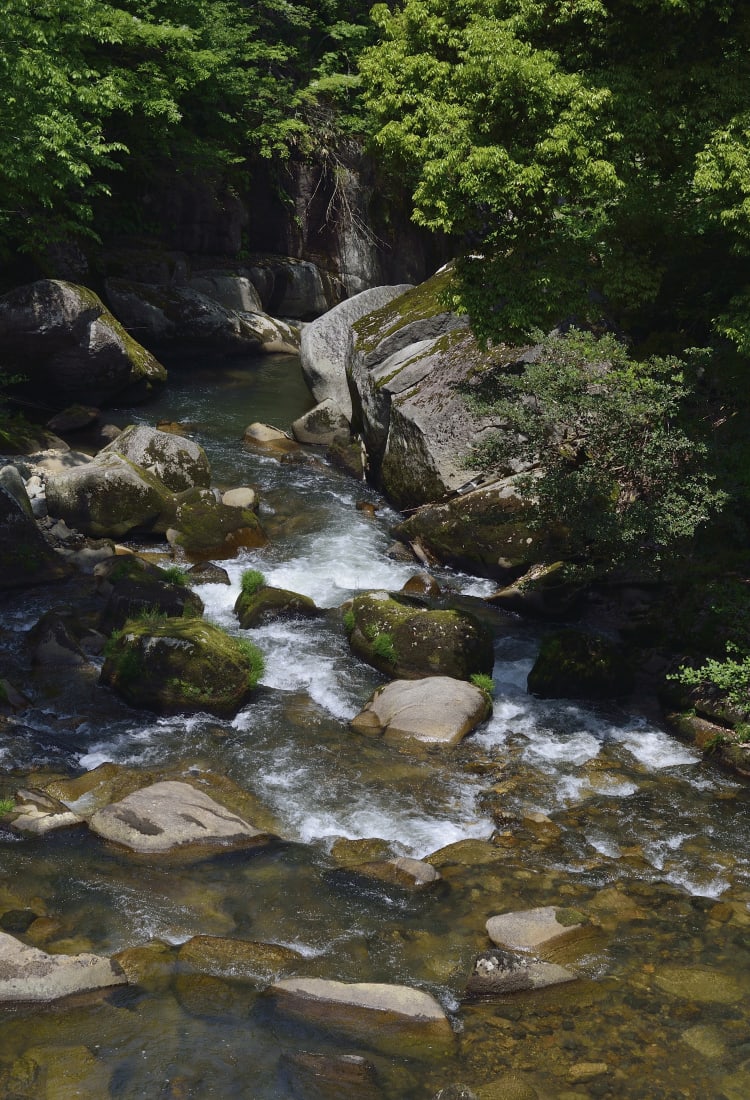

SHIMANE Unnan Area Learn all about the making of swords in this less-travelled land of ancient myths
Learn all about the making of swords in this remote land of ancient myths
The Izumo region is known as the land of gods and myths, and Okuizumo, which means Inner Izumo, is where many of Japan's most ancient myths are set. Deep in the mountains, away from the busier and more populated towns near the coast, this area is reportedly where much of Japanese culture developed, including ironmaking, swords, sake, chopsticks, and waka poetry.
Don't Miss
- Learning about the Japanese sword
- The scenic Orochi sightseeing train
- Mansions and gardens built for samurai lords
How to Get There
The JR Kisuki Line winds its way through the region starting from Shinji Station, which is just 20 minutes from either Izumo or Matsue , and around three hours via the Yakumo Limited Express from Okayama City .
The most memorable way to arrive is on the Okuizumo Orochi sightseeing train, which features an open-air carriage so riders can take in the stunning views as the train ascends almost 700 meters into the mountains.
The oldest myths in Japan
The most famous of Japan's myths, recorded in the country's oldest books, the 8th-century Kojiki and Nihongi, is the story of the great eight-headed, eight-tailed serpent Yamata no Orochi, whose name and image are found everywhere in the area.
A hero named Susano no Mikoto slays the serpent, saving a local girl from being sacrificed to it, then marries her. He also discovers a sword in the serpent's tail, the great Kusanagi Sword, now one of the three Imperial regalia of the Japanese Emperor.
All around the region are ancient shrines where the story is set.
Land of iron and water
The eight-headed serpent Orochi is believed to be based on the eight tributaries of the Hiikawa River, that bring the melted snow of the mountain range that separates the Sea of Japan coast from the Pacific coast.
With so many valleys and gorges there are a lot of great places to go hiking, one of the best being Oni no Shitaburui, a deep gorge with raging torrents dotted with massive, eroded boulders. Neibhoring Unnan City has many waterfalls such as the Yaedaki and Ryuzugataki waterfalls, with pleasant walking paths leading to them.
Outdoor possibilities for every season
Okuizumo is a convenient base for exploring Mt. Hiba. The mountain is cool in the summer and stunning in the autumn when the forests of beech trees change color. It is a great place to hike all year round.
The Japanese sword
Japanese swords are made from a kind of steel called tamahagane, which is made from iron sands from which iron is extracted in a unique kind of forge called tatara. Modern science has been unable to create a better technology to manufacture tamagahane, so the more than one-thousand-year-old tatara method is still the only way to make the steel for genuine Japanese swords even now.
The tamahagane from here in Okuizumo was exported all over Japan, and provided a major source of income of the area's feudal lords. There are many sites around the area devoted to these ancient forges, and in fact the scenic rice paddy terraces of the area were constructed on the hillsides after the iron sand had been quarried.
A village dedicated to the sword
Unnan City's Yoshida-mura is a whole village devoted to the history of the production of iron and swords, and at Yasugi, east of Matsue at the port where the tamahagane was exported, is the Wako Museum. In addition, a must-visit site for sword aficionados is the Okuizumo Sword and Tatara Museum .
Located just a few minutes by car from Izumo-Yokota Station, this new museum not only has displays of many different styles of Japanese swords and blades but also detailed explanations of the tatara process. Twice a month there are demonstrations of smiths working the tamagahane, and you can try your hand at working it yourself.
Elegant samurai mansions
In such a remote and rural region you'll be surprised to find elegant and refined mansions owned by families who prospered through tatara iron manufacturing. The Itohara and Sakura clans were two of the nine families who controlled the iron industry in the feudal period.
Their estates include many historic buildings and delightful gardens where you can see displays about the history of the tatara as well as of elegance and luxury in the buildings and rooms built exclusively for the the use of the lords from Matsue Castle would come and stay.

Onsen and local culinary specialties
Numerous hots springs dot the region, and a wide variety of accommodation choices offering fresh local specialties like soba and wild boar makes it easy to spend several days here getting close to authentic Japanese nature, culture and history.
* The information on this page may be subject to change due to COVID-19.




























































